A rather average exterior —by Recoleta standards anyway— hides one of the most artistic depictions of Christ being crucified. Sometimes it pays to peek inside:
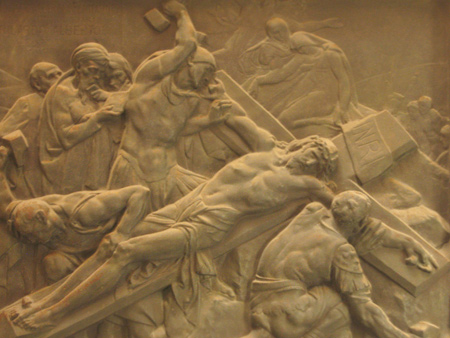
A rather average exterior —by Recoleta standards anyway— hides one of the most artistic depictions of Christ being crucified. Sometimes it pays to peek inside:

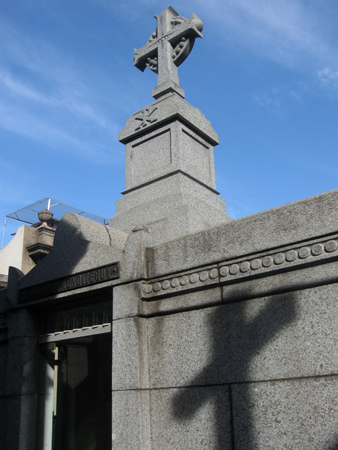
Carlos Menditeguy, sportsman & reknowned playboy, embodied Argentina’s growing role in world affairs in the 1950s. He did it all & did it well, becoming one of the top 6 polo players in the world & often seen in the Argentine Grand Prix. His skill & performance made Maserati take note, & they offered him an opportunity to race on behalf of the company in Europe. Menditeguy’s most significant Formula One race earned him third place while driving a Maserati 250F in 1957. He was notoriously hard to work with & demanding on his equipment but loved the risk involved. Menditeguy passed away in 1973.
Even though the family vault is far from the main walkways of the cemetery, Carlos obviously wanted a permanent stage presence. The northern façade contains a large glass panel providing the visitor an easy look at the elaborate altar & his casket… which will never be moved to underground storage:
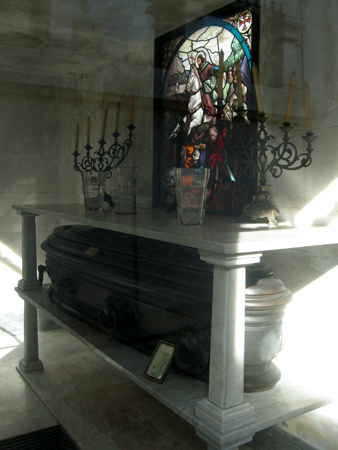
A stained glass panel in the rear of the vault depicts Santiago Matamoros, patron saint of Spain. Not in the least bit politically correct, St. James supposedly helped Spaniards through 800 years of territorial reconquest as they slowly pushed the Moors back to North Africa. Translated as St. James the Moor Slayer, the stained glass depicts him wielding a sword with several Moors being trampled by his horse:
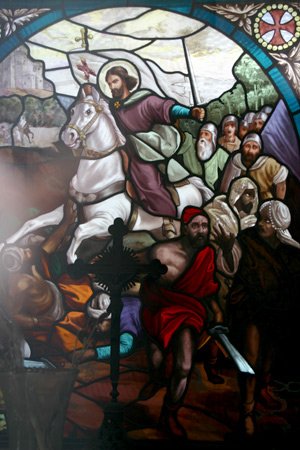
A few more shots of this standard cemetery symbol in a variety of shapes & sizes:
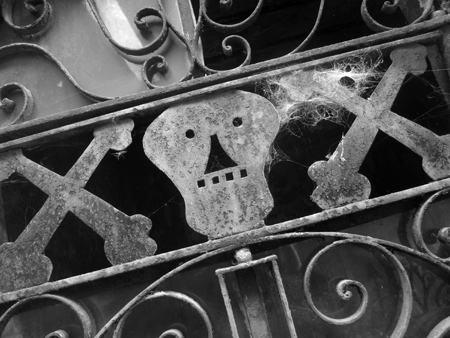
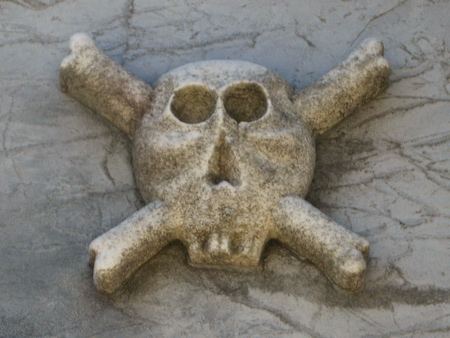
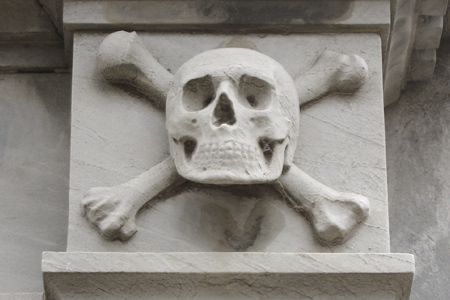
The first post about this topic can be found here.
2 Comments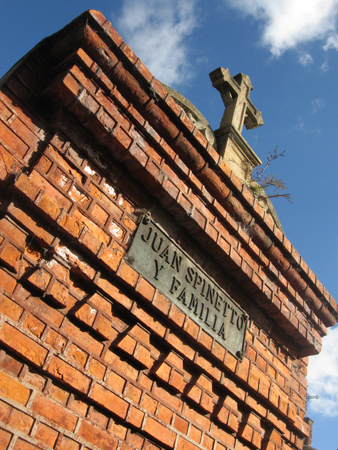
Perhaps a relative of market owner David Spinetto, the most striking thing about this family vault is that it is made of brick… or is it?? On closer inspection the façade turns out to be merely concrete marked & painted to appear like brick:
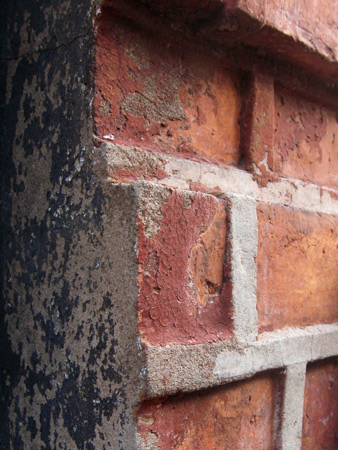
Brick has never been valued in Buenos Aires as an exterior finish. Although extensively used for the interior of walls, bricks were covered with a thin layer of concrete usually decorated to imitate stone—a technique known as simil piedra, literally “like stone” in Spanish. But since stone was in scarce supply for construction throughout the vast grasslands of the Pampas, locals decided the next best thing was to give buildings a faux finish to resemble stone.
The Spinettos took this technique even further (probably using actual brick on the interior) but choosing to decorate with faux brick instead of faux stone. Not the only example in the city, but definitely unique in Recoleta Cemetery.
Leave a Comment